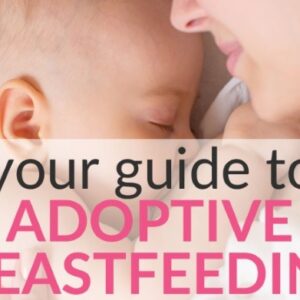In addition to simply holding your baby in your arms, several different breastfeeding positions might be useful for you to master. Done right, they may work better if you are tired, have had a c-section, have a breast infection, if your baby is fussy, has colic or acid reflux, and so on. Some breastfeeding positions also work better if your baby is, e.g., premature, newborn, or a toddler.
Let’s go through a number of more and less common breastfeeding positions and when to use them.

Breast milk is the best source of nutrition for babies, from the time they’re born up until they turn 6 months of age. It has so many benefits for both mom and child – it’s inexpensive, readily available, safe, and natural. It’s packed full of nutrients and substances that protect the gut, fights against common microorganisms, provide essential nutrition, and help promote growth and proper neurodevelopment. Indeed, studies show that babies who breastfeed for at least 6 months are less likely to develop neurodevelopmental conditions, such as attention-deficit/hyperactivity disorder (ADHD) and autism spectrum disorder (ASD).
While it’s quite natural to provide your newborn with breast milk, a lot of moms end up having breastfeeding issues. It could be because of different things – the amount of milk, the breastfeeding position, or even the latch.
This article was written to help moms find that perfect position to comfortably breastfeed their little ones. After all, breastfeeding takes up so many hours of the day. Using the right breastfeeding positions will make the process easier, letting you and your baby focus and enjoy your special time together.
Why is the breastfeeding position important?
Breastfeeding is unfortunately not as simple as it sounds or looks like. A lot of moms try to breastfeed, but some of them end up going for alternatives. Research shows that about 61% stop trying because of incorrect breastfeeding positions, while 52% have issues with latching onto the breast. Other reasons for quitting breastfeeding are a low milk supply and the need to return to work for some moms.
Moms with the correct breastfeeding position will find it easier to latch their babies and let down their milk. This also prevents blockage of milk in the milk ducts that could further lead to mastitis, which is an infection of the breasts.
I’m sure you’ll be glad to have a stress-free bonding experience with your baby, and knowing the right positions will definitely go a long way. Let’s read on to find out more about breastfeeding positions.
Breast support techniques
Before we list the different types of breastfeeding positions, it’s important to discuss how to support your breast as you go through feeding your child every few hours or so. While one breast may not be heavy for an adult, it could place additional weight on an infant’s head while breastfeeding. This is especially true for moms who have large breasts. These techniques can help reduce the load so that breastfeeding becomes more comfortable for your child.
C hold
The C hold is typically used for the Cradle, Cross-cradle, and Clutch holds. Form an inverted letter “C” with your free hand by placing your thumb finger on top of the breast and the rest of the fingers underneath.
U hold
The U hold is usually paired with the Clutch hold, but it can also be used for the Cradle hold. Make a letter “U” with your free hand by placing your thumb on one side of the nursing breast, with the rest of the fingers on the other side of the breast.
Although the C and U holds go well with certain breastfeeding positions, it’s more important to choose a hold that you’re comfortable with.
10 breastfeeding positions you should try
Let’s start with a list of the different kinds of positions you can try out. The first four are the most popular ones, but you can definitely try them all to find out which position is the most comfortable for both you and your baby.
To make things simpler, we’ll assume that you intend to start breastfeeding with your right breast. Instructions will be written with the right breast in mind, so you can easily tell if the same or opposite side or body part is being referred to in the steps.
1. Cradle / Front / Madonna hold
The Cradle hold is the most common position among all moms. It’s also probably the most natural position to use for first-time moms.
In this type of hold, sit on a chair, preferably with armrests or cushions. Place your baby across your lap, with their head facing your right breast. Tilt your baby’s head and body towards you, with the head on your right forearm, the mouth in front of your right nipple, and your baby’s left arm below your right arm.
2. Clutch / Football / Rugby / Underarm hold
This hold is one of the most comfortable positions for moms who give birth via Caesarean delivery. In fact, this position has been associated with less muscle strain and other musculoskeletal disorders as compared to other breastfeeding positions.
Be ready in a sitting position with some pillows placed on your right side and towards your back. Tuck your baby in on your right side, with their head facing your right breast and their legs placed towards your back (on the pillows). Your baby’s mouth should be level with your right nipple. Make sure that your newborn’s hips are flexed and that they look comfortable with this position before continuing the feed.
3. Side-lying / Reclining / Lying down position
If you feel that the classic Cradle or Cross-cradle holds leave you tired for the rest of the day, try the Side-lying position instead. Moms who have undergone normal (vaginal) delivery are less tired when they use the Side-lying position.
Start by lying down sideways with your head and body facing to your right. Place a pillow under your head. Your right arm should be placed in front of you. Place another pillow above or below your right forearm (whichever is more comfortable for you). Using your free left arm, support your child’s head and body tilted towards you. Their mouth should be positioned towards your right nipple. A small but firm pillow placed behind your baby’s back can also help keep them in the proper position.
The three positions described above are among the most common ones. The video below will show them all in action is a very clear way. Below the video, you’ll find other good breastfeeding positions to consider.
4. Cross-cradle / Crossover / Transitional hold

A good alternative is the Cross-cradle hold. Compared to the cradle hold, you simply switch arm that supports your baby. This position allows frees your other arm, which can be helpful when you need to do a little multitasking.
Like in the Cradle hold, sit on a chair with arm support (pillows or cushions would do).
Your baby should be across your lap, with their body properly tilted towards you and their head facing your right breast. Support your baby’s neck and upper back using your left hand. Your left thumb and left index finger should snugly wrap the back of the neck with the tips of the fingers behind your baby’s ears. The palm of your left hand should rest on your baby’s upper back. Your right arm should be free to move with this breastfeeding position.
5. Inverted / Upside down side-lying position
If side-lying is the position you’re most comfortable with but dread sore breasts from happening all over again, the Inverted side-lying position works well as an alternative.
Place yourself similarly as in the Side-lying position. Place your baby’s body in an upside-down position with the legs towards your head. Your baby’s mouth should still be facing your right nipple, with the rest of the body tilted towards you.
6. Side-lying cradle hold
Another lesser-known option for C-section moms is the Side-lying cradle hold. This position still makes use of the classic Cradle hold but in a manner that relieves pressure on the surgical wound.
Lie on your back with multiple pillows on the back for support. Once you feel comfortable, slightly turn your body to your right. Follow the steps used in the Cradle hold while staying in this position.
7. Laid-back nursing / Biological nurturing
Laid-back nursing is the common breastfeeding position used as soon as a child is born. Also known as biological nurturing, this position promotes baby-led feeding and is more “laid-back” in terms of your baby’s position, allowing them to find the nipple and start breastfeeding on their own.
Like the Side-lying cradle hold, look for a comfortable position lying down in bed or on a couch. If you are unsure, a 45-degree angle is a good starting point, then adjust until you feel at ease. Instead of lying on one side, stay in a neutral position and place your baby on your chest. You’ll find that your child will use their arms or legs to move around on their own until they reach the nipple and feel cozy with their own position. You can use your hands to support your baby’s buttocks or thighs as well.
8. Australian / Saddle / Down-under / Koala hold

The Australian or Saddle hold is an interesting position to breastfeed your child and can be used when your baby is fussy or prefers one breast over the other.
Sit in a comfortable chair and place your baby in a sitting position by letting them sit on your right thigh with both legs dangling. Support the head with your right hand, and make sure the mouth is approximately level with your right nipple. Then change to the other leg and side when needed.
9. Dangle breastfeeding position
The Dangle position is what it sounds like. You bend over your baby and let them suckle your dangling nipple. This position may help clogged milk ducts as gravity will help the milk flow.
Place your baby on their back and lean over him or her in a comfortable way, e.g., while you are on all four. You can even position your baby so their nose is in line with where you have clogged ducts.
You can see the dangle position about one minute into the video below. However, the mom in the video is not making an effort to make herself comfortable – something that’s very important to not get a sore back or neck, for example.
10 Breastfeeding in a sling or carrier
Breastfeeding in a sling or carrier is totally possible. If your baby is in a carrier, you will have to lower your baby’s position and maybe loosen and release the side strap to get the baby into the right position. But if you have to get on with your chores or chase an older sibling around, feeding on the go like this can be extremely convenient. Depending on what and how much you loosen straps, make your baby is safe!
To breastfeed in a sling is essentially the same. Loosen and lower the sling and position your baby at the right angle and height. Make sure your baby can’t fall out, and always keep a hand on their head or back, depending on age.
Signs that the breastfeeding position is working for you
It’s definitely been mentioned every now and then in this article: the number one rule is comfort! For a breastfeeding position to be effective, both you and your baby should feel comfortable. If your back hurts or your arm or leg goes numb, it’s likely not the best position for you for now. Try experimenting with other holds so you can choose what works for you.
Babies should also feel snug as they drink their daily dose of nutrients. Make sure that their whole body is aligned – there should be no twisted body parts, like a hyperextended neck or the lower part of the body being placed sideways. Reposition your baby until you are able to form a straight line with your infant’s ears, shoulders and hips.
A good breastfeeding position helps your baby focus on other aspects of breastfeeding, like latching and milk supply. Although nipple trauma and nipple pain are signs of an improper latch, sometimes these signs develop because your child is uncomfortable with their position in the first place. This, in turn, affects their latching and feeding process and the overall breastfeeding experience for both of you.
Breastfeeding positions and tips for different situations
Newborn babies and infants
The breastfeeding positions mentioned here are all designed with the newborn in mind. Just make sure to support their head well. You can try a different hold every day to see which one your baby prefers.
Toddlers
Any of the breastfeeding holds can be used for toddlers; however, because they are much heavier as compared to babies, the Laid-back nursing position can save you the trouble of supporting their weight with your arms.
Babies with a cold
Yes, babies who are mildly sick can still breastfeed as long as they’re comfortable with it. Because having a cold makes it harder to breathe normally, an infant may not feed as long as they used to in order to catch their breath. Reduce the effect of nasal congestion by feeding your baby in an upright position. The Australian hold and Laid-back nursing are possible options.
Babies with acid reflux
Acid reflux can be seen in both premature and term infants. Research shows that placing them in a side-lying position on their right is associated with decreased gastric acid levels. You can choose breastfeeding holds that position your baby in this way, as the Cradle, Cross-cradle or Side-lying holds for your left breast or the Clutch hold for your right breast. Avoid placing your baby on a side-lying position to their left.
Breastfeeding after a Cesarean delivery
The best option for C-section moms is the Clutch, Side-lying, and Side-lying cradle holds. Your surgical wound is less likely to be hit accidentally when you use these positions.
Premature babies
Experts say that the Cross-cradle or Clutch holds are best used for moms who can breastfeed their premature babies. Laid-back nursing is one alternative position. Seek help or assistance from a lactation consultant because some preterm babies are not yet strong enough to create the suction pressure that drives milk from the breast and into the baby’s mouth. Accessories such as nipple shields may come in handy for these situations.
Babies with infantile colic and/or gas
Breastfeeding in a laid-back position helps ensure that your baby can get both hindmilk and foremilk, which can decrease episodes of colic. Use an upright position to lessen the amount of air that they swallow alongside milk.
Positions to reduce/ let-down (decrease milk output)
Most moms are worried about providing enough milk, but there are mothers who actually produce too much that it overflows and stresses their babies instead. To reduce this fast let-down process, assume a Laid-back feeding position.
Breastfeeding position for nipple pain or trauma
Maybe your baby is so eager to drink milk that you end up having nipple pain or trauma. If the natural pulling sensation during sucking is gradually turning into pain, switch to the Laid-back nursing position.
Breastfeeding position for mastitis
To make it clear, continue breastfeeding your child even if you have mastitis unless you have been told by a physician or lactation consultant to stop. The cradle hold is the most widely used breastfeeding position in these circumstances.
Twins / Multiple Births
The main challenge in moms with more than one newborn to feed is fatigue, having to feed round the clock. The Clutch hold is best used in this situation, but the Side-lying position also helps weary moms unwind a bit in bed as they feed their babies.
Other tips for comfortable breastfeeding
Props are very much appreciated by moms. Extra cushions and pillows help create a restful space for feeding. For the Australian hold, footstools help adjust the leg height so that infants are at the right angle and height to be fed.
Don’t lean too far! Long-term musculoskeletal problems can arise from improper posture. Use a neutral position with your back straight as much as possible.
Don’t be afraid to ask for help. Most hospitals have lactation consultants whose sole focus is to get your breastfeeding habits up and running. Moms who have trouble finding the right position may benefit from the experts themselves.
Takeaway
Breastfeeding has so many benefits for both mothers and babies. Not all moms adjust well to the challenges of breastfeeding. Some may find it natural, but others may need constant guidance and reassurance. I hope that this article has at least given you some confidence to push through with breastfeeding and to have the patience and determination to make it work for you and your little one.
Read Next
- 6 Common Breastfeeding Problems; How to Solve Them Quickly
- 4 Common Newborn Breastfeeding Latch-On Problems Solved Now
- 5 Reasons For Low Libido While Breastfeeding and What to Do!
Research References
- Bar, Sari; Milanaik, Ruth; Adesman, Andrew. Long-term neurodevelopmental benefits of breastfeeding. Current Opinion in Pediatrics 28(4):p 559-566, August 2016. | DOI: 10.1097/MOP.0000000000000389
- Kronborg, H., & Vaeth, M. (2009). How are effective breastfeeding technique and pacifier use related to breastfeeding problems and breastfeeding duration? Birth (Berkeley, Calif.), 36(1), 34–42.
- Altuntaş, N., & Ünsal, A. (2019). Which Hand Position in Breastfeeding Is Better for Milk Intake: Palmar Grasp or Scissor Grasp? A Pilot Study. Breastfeeding medicine : the official journal of the Academy of Breastfeeding Medicine, 14(9), 662–665.
- Ezeukwu, O. A., Ojukwu, C. P., Okemuo, A. J., Anih, C. F., Ikele, I. T., & Chukwu, S. C. (2020). Biomechanical analysis of the three recommended breastfeeding positions. Work (Reading, Mass.), 66(1), 183–191.
- National Childbirth Trust UK. (Review Oct 2019). Laid-back breastfeeding: benefits and uses.
- Thomson S. C. (2013). The koala hold from down under: another choice in breastfeeding position. Journal of human lactation : official journal of International Lactation Consultant Association, 29(2), 147–149.
- Yayan, E. H., Kucukoglu, S., Dag, Y. S., & Karsavuran Boyraz, N. (2018). Does the Post-Feeding Position Affect Gastric Residue in Preterm Infants?. .Breastfeeding medicine : the official journal of the Academy of Breastfeeding Medicine, 13(6), 438–443
- Pehlivan, N., & Demirel Bozkurt, O. (2021). Comparison of Cradle Hold Versus Football Hold Breastfeeding Positions after Cesarean Section in Primiparous Mothers. Breastfeeding medicine : the official journal of the Academy of Breastfeeding Medicine, 16(11), 904–908.
- Pawin Puapornpong, Kasem Raungrongmorakot, Wipada Laosooksathit, Tharangrut Hanprasertpong, and Sukwadee Ketsuwan. Comparison of Breastfeeding Outcomes Between Using the Laid-Back and Side-Lying Breastfeeding Positions in Mothers Delivering by Cesarean Section: A Randomized Controlled Trial. Breastfeeding medicine : the official journal of the Academy of Breastfeeding Medicine, 12, 233–237.

Paula Dennholt founded Easy Baby Life in 2006 and has been a passionate parenting and pregnancy writer since then. Her parenting approach and writing are based on studies in cognitive-behavioral models and therapy for children and her experience as a mother and stepmother. Life as a parent has convinced her of how crucial it is to put relationships before rules. She strongly believes in positive parenting and a science-based approach.
Paula cooperates with a team of pediatricians who assist in reviewing and writing articles.





